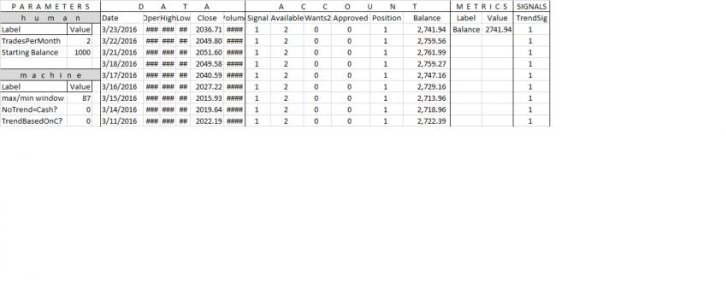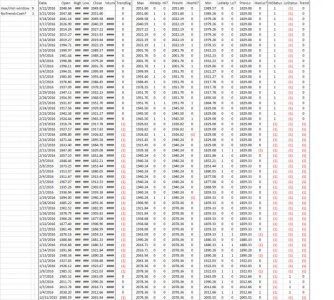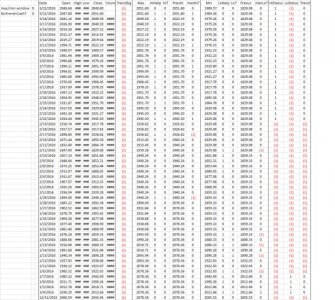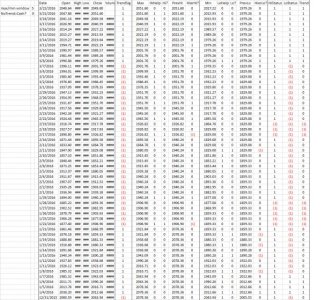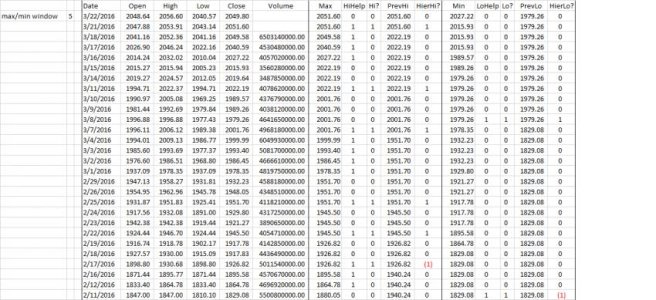userque
Well-known member
Did:
Todo:
Latest version has a final balance of $6200 ($1000 initial) using just the 20 minute algo setting.
Full Data:
D A T A A C C - Pastebin.com
Pastebin post expires in about a month.
Note:
Not sure if I mentioned that the longer the algo runs, the more likely it'll find a better solution. In this case, there is a cumulative effect. I can run the algo everyday, for varying lengths of times, and still possibly see improvement. This is something I'd do once the final version is ready, not during this testing phase.
Edit:
One of the parameters was at its maximum value as constrained by the algo. I increased the maximum value constraint for that parameter.
- Added dynamic SMA crossover with the underlying.
- Gave algo the ability to mix all or some of the indicators to generate a signal.
- Fixed bug.
Todo:
- Make all indicators dynamic
- Give algo ability to choose which indicator to follow dynamically (One day, follow this indicator, next day, follow that indicator)
- Modify Trend indicator to represent breakouts to the upside and downside.
- Convert SMA to EMA
Latest version has a final balance of $6200 ($1000 initial) using just the 20 minute algo setting.
Full Data:
D A T A A C C - Pastebin.com
Pastebin post expires in about a month.
Note:
Not sure if I mentioned that the longer the algo runs, the more likely it'll find a better solution. In this case, there is a cumulative effect. I can run the algo everyday, for varying lengths of times, and still possibly see improvement. This is something I'd do once the final version is ready, not during this testing phase.
Edit:
One of the parameters was at its maximum value as constrained by the algo. I increased the maximum value constraint for that parameter.
Last edited:


